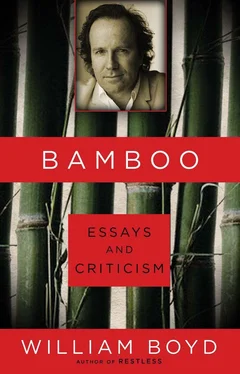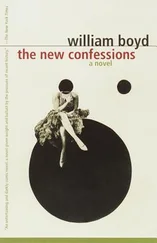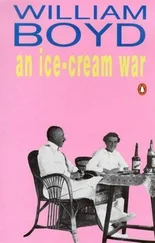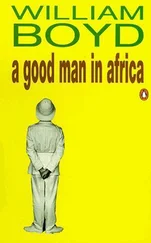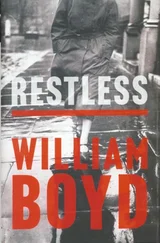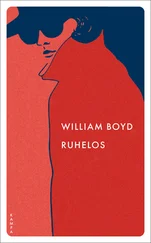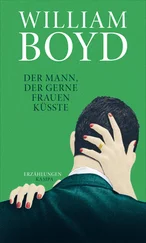Barking Road, Newham’s old commercial spine, built early in the nineteenth century to connect the East and West India Docks with the river port of Barking. Now it wears the familiar garb of every urban high street: franchise chains and letting agencies, car salesrooms, pubs and shuttered shops. Here and there the odd sixties high-rise. Rows of two-storey terraced houses lead off on either side. The Boer War lingers here in pockets — Mafeking Road, Kimberley Road — as do little bits of Scotland — Glasgow Road, Tweedmouth Road, Perth Road. Bright doors speak of stubborn house-pride: cerise, mauve, moss green, canary.
Canary Wharf’s solid blunt obelisk looms everywhere, over house gables, dominating the western horizon, confronting you as you turn corners. Margaret Thatcher’s real lasting monument, a concrete and glass hymn to commerce, capitalism and market forces rising heftily, beefily, out of the Isle of Dogs.
Dogs shit freely on Newham’s streets as they do throughout London, in Chelsea and Mayfair as well as in Barnet and Peckham. And dogs run free around the estates behind the Barking Road. The few dogs on leashes look at their free-ranging brothers enviously, longing to be released.
East London goes on for ever, the great “other city” within the vast spreading mass of London. Cut off from the west by the office towers of the Square Mile, it runs from Stepney to Dagenham, onwards and onwards. The sluggish flow of traffic on the arterial roads glints in the afternoon sun like the scales of fish.
Fish still swim in Roding Creek, I suppose. One hundred and fifty years ago Barking was a fishing port with over 200 Barking smacks and 1,000 men and boys to man them. Now the northern outfall of London’s main drainage decants here at the mouth of Roding Creek where it joins the Thames. The air is rank with the smell of gas.
Gasworks can provide a kind of immortality. Beckton Gasworks are so called after Simon Adams Beck, governor of the Gas Light and Coke Co., who bought the site at East Ham in 1867. Beck-town grew and grew and became the largest gasworks in the world. On the map all colours cease at Beckton: it remains white, the gasometers, the tanks and the filterbeds marked as neat rows of circles — strange hieroglyphics.
Hieroglyphics badge Newham’s walls today, the graffiti and the tags of the urban young, a form of writing that can be found replicated in Paris, Rio and Manhattan. Tribal markings that defy the local — all seemingly written in the same crazed hand — which are, bizarrely, truly international.
“International cheap phonecalls” proclaims the sign above a shop window, an audacious oxymoron. Indeed, “International” appears to be a favoured adjective in Newham. “International hair styling,” says another shop window. There is “International rowing,” also, at the regatta centre, and you can pray for your misbegotten soul at the Amazing Grace International Worship Centre on the Barking Road. Two senses of “international” operate here: one is about inclusion — come one, come all — one is about keeping up with the Joneses.
Jones Scrap Metal, at the beginning of Barking Road, is reputedly the biggest in London, which is a not-to-be-sneezed-at claim-to-fame for Canning Town. Another feather in Newham’s cap is the City Airport. Amongst London boroughs only Hounslow can boast a fully fledged international (that word again) airport. You can fly all over Europe from Newham, to Rotterdam and Amsterdam, Paris and Brussels — which is not bad from a borough generally regarded to be on the skids.
Kids mooch around in tatty recreational areas, kids with bikes and skateboards, all colours, all nationalities. The walls and sheds and garage roofs around them are all crowned with barbed wire or razor wire or more complicated revolving impediments. Keep kids out, these hostile barriers seem to say, indications of deeper suspicions, no innocence here, a want of love.
Lovage Approach is the new Newham, south of Tollgate Road. Dinky, villagey lanes, with small, clustered brick houses, leaded diamond-paned glass in the windows, porches and dormer windows, a hotch-potch of domestic styles. Architects creating a “community,” here, reaching back to their notional roots — a reckless pillaging from a catalogue of olde-worlde vernacular styles — as we approach the millennium.
Millennium Mills still stands, built decades before the Millennium Dome, not so far away. A monument to the borough’s industrial past when the “offensive trades” were ordered out of metropolitan London and were obliged to set up shop in the east along the Thames. An industrial base almost vanished now, impossible to rebuild or renew.
New City Road turns off Barking Road. A long run of terraced houses. On either side are other identical streets, Kingsland Road, Patrick Road … Avenues of neatly pollarded plane trees, houses built in the nineteenth century for clerks working in the City. This could be Fulham or Battersea twenty years ago. Now with the new “villages” proliferating perhaps this is all there is in Newham that is really old.
“Old” Newham never really existed, however. The borough was created in 1965. The county boroughs of East Ham and West Ham brought together with bits of Plaistow and Woolwich and Upton. “Ham” means low-lying pasture.
Pasture is hard to find today. There are angular bits of waste ground, thick with buddleia and rosebay willow herb, abandoned tracts of land between spur roads and the wire-mesh walls of tyre depots and scrap metal merchants. Strangely, along the Royal Albert Dock Spine Road there is a sudden profusion of allotments, well tended. Things are growing here: runner beans and potatoes, lettuce and cabbages. Prince Albert would be pleased, I think, to see such husbandry and enterprise, and so would his queen.
Queen Victoria’s presence still leaves a marked trace. All the royal docks are in the borough. Her own Victoria Dock, her husband’s Albert Dock and her grandson’s dock, George V. The City Airport sits between Albert and George like an aircraft carrier moored in a wide placid river.
River views are distant ones in Newham. The docks dominate the river here: huge wind-flurried rectangles of water reflecting the turbulent skyscape. And the sewage jetties and the sludge piers of Beckton hog the river bank at Galleons Reach as the Thames’ northern meander turns east again. From a spine road you can catch a glimpse of the scalloped towers of the Thames Flood Barrier, shining like burnished steel.
Steel shutters on modest shops — newsagents, electrical goods — tell you something about a place. Many shops selling second-hand furniture tell you something about a place. But just when you think you have Newham sited in its demographic circle of hell you see the dry-ski run — the Beck-ton Alps Ski Centre — and the Asda superstore. The contrasts abound: pie and mash for sale and McDonald’s Drive-Thru; boarded-up, torched flats and bijou pseudo-villages. And everywhere streets bulging with traffic.
Traffic lights in Newham seem set longer than anywhere else in London. “The borough doesn’t like motorists,” a minicab driver confides. The wait seems to go on for ever. And look at all the speed-bumps. Yet most people’s view of the place is from a car — passing through, heading east or west, on a spine road or a flyover — or from the tall gantries of the Docklands Light Railway. Rare names appear that ring a distinct bell — West Ham, of course — and others that provoke fainter recognitions — Custom House, Silvertown (can there be a place in London called Silvertown?), Canning Town and Upton.
Upton Park, it is hard to believe, had — in the eighteenth century — a botanic garden second only to Kew, hence its name. It is famous now for being home to West Ham FC, for some of the worst housing in Europe and for The Spotted Dog, the oldest pub in the borough, which dates from the sixteenth century. The Spotted Dog— ave atque vale .
Читать дальше
